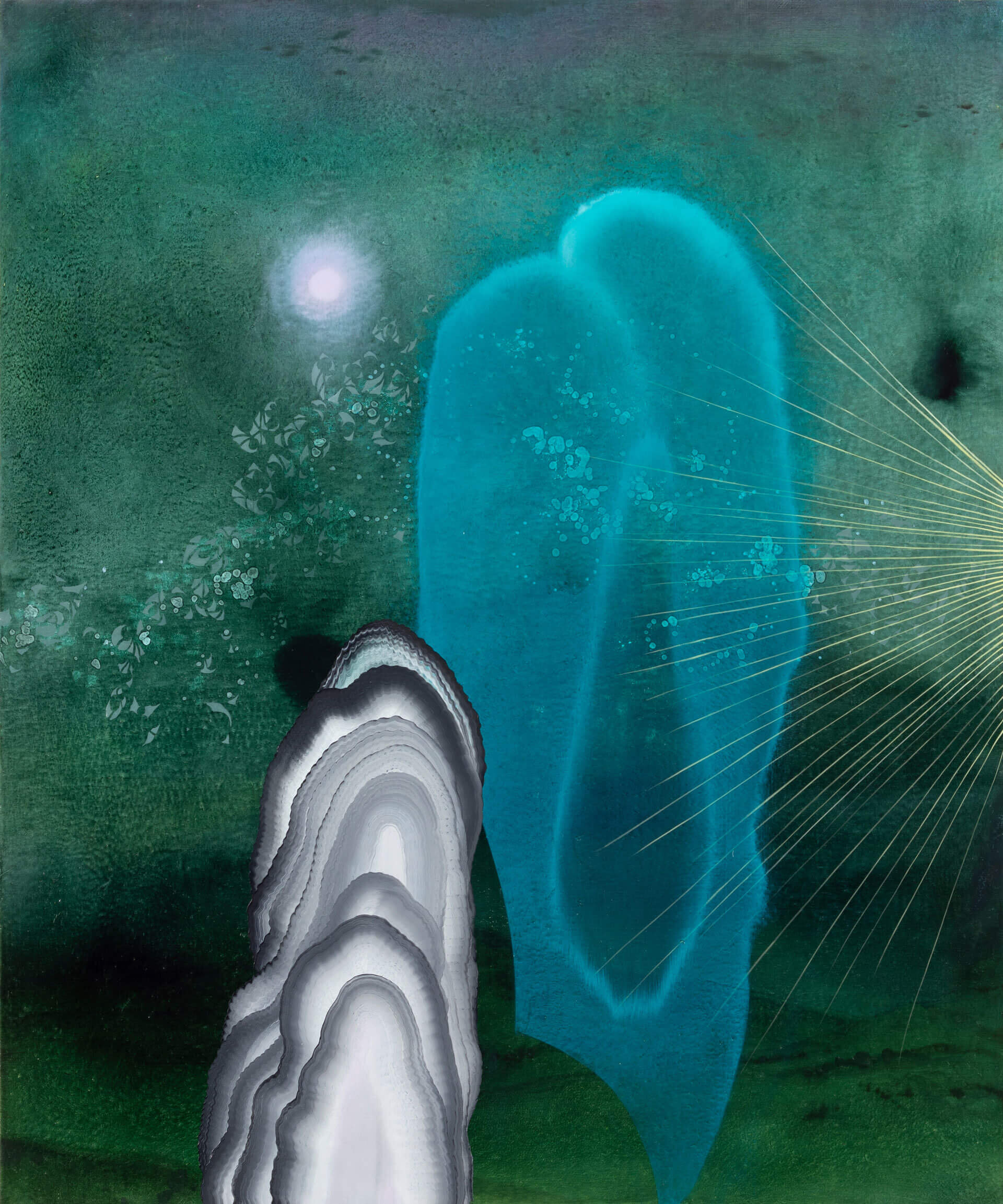Channeling the specters and emotions that permeate landscape, Waterston’s new paintings create an unsteady and tenuous world. He paints dream-states and twilight, the moments at which daylight and darkness touch. “Eventide suggests the liminal in-between states both in dreams and twilight,” Waterston writes. Gossamer shapes and shadows emerge; playful chimera, phantoms and ghost-like forms occupy watery landscapes and celestial realms. The paintings often juxtapose fastidiously painted representation up against loose, viscous gestures, stains, and abrasions.
Waterston is meticulous in his materials, using techniques which reference early panel painting. His surfaces are built up through an accumulation of various painting mediums, gesso made from marble dust, and rabbit skin glue. Painted on wood and canvas, these deliciously layered surfaces become mysterious and waxy, refracting light in a distinctive manner, and creating an evocative depth of field. The paintings wander between landscape and abstraction, mountain ranges dissolving into sky.
Waterston’s paintings delve into a liminal world, finding a poetic space between light and shadow. “A lot of the shapes in these paintings came from looking at forms that were ghostlike or phantom like,” he says. “I didn’t want to be telling ghost stories, but I wanted to try and materialize the invisible, to ask what the invisible looks like. I wanted to work with a visual vocabulary that can animate a sense of space, filled with vespers and other life forms.” He cites the Japanese term Obake, often mis-translated as “ghost.” Instead of being a human spirit, the Obake are preternatural energies, sometimes understood as the spirits of stone, mountains, or wind. Literally translated, the term means, “a thing that changes,” and so in Waterston’s paintings, we see a series of mutations and transformations between familiar landscape elements—a bird, a mountain, a tree, a pebble, a branch—and ephemeral, shapeshifting forms.
CLICK ON IMAGES TO VIEW LARGE
Nightfall Study, 2018 watercolor on rag paper 10 x 7 inches
Sonata no. 2, 2018 oil on canvas 40 x 30 inches
My Ghost, 2018 oil on canvas mounted on wood panel 48 x 36 inches
Chimera, 2018 oil on wood panel 36 x 24 inches
Phantasm no. 2, 2018 oil on wood panel 24 x 20 inches
Phantasm no. 3, 2018 oil on wood panel 24 x 20 inches
Torrent, 2018 watercolor on rag paper 20 x 14 inches
Dusk, 2018 watercolor on rag paper 12 x 9 inches
Morpheus no. 6, 2018 watercolor on rag paper 14 x 10 inches










